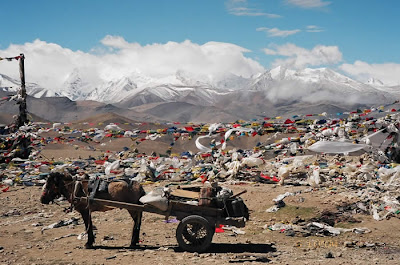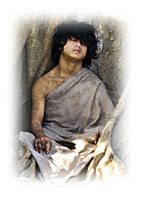
Zarathustra and Gautama in a Non-Jonesian Framework
Pre-edited text by [renegade historian] Dr. Ranajit Pal
The blunder of Palibothra by Sir William Jones [the Jones in Jonesian] and the forgery of Lumbini by Dr. A. Fuhrer[1] have not only wrecked Indology but also [distorted] world history... Jones’ false theory has inundated even the history of Jesus Christ [St. Issa], whose link with Seistan remains unnoticed.
Another casualty was Zoroaster [Zarathustra]... W. B. Henning writes: "…there is scarcely a point on which there is unanimity; Zoroaster’s time and place, the religion he inherited from his forefathers, the message he brought, his aim, his community, the development of his church, the history of the Avesta -- each scholar will dissent from his fellows on one point or another."[2]
R. N. Frye candidly admits failure[4]: "Zarathustra, or Zoroaster as the Greeks called him, presents many problems, and it is discouraging that after so many years of research we do not know when or where he lived or even precisely his teachings."
However, the learned Harvard scholar is unaware that a British forgery lies at the root of the malady. Sanity cannot be brought back to Iranian history without noting that India and Iran were once interlinked geographically. A similar reform is needed in Indology[5].
D. Chakrabarti of Cambridge has written about some failings of colonial Indology[6]. But he is unaware that the most damaging legacy from the colonial era, which affects the histories of both India and Iran, is Sir William Jones’ false identification of Palibothra.
A study of the Iranian and Indian texts including the Buddhist Jataka Tales in a non-Jonesian framework merges the histories of Zoroaster and Gotama [Siddhartha Gautama, the historical Buddha] and points at the existence of an ancient holy land in Seistan.
 Ancient "India" (Bharat in the Mahabharata) was a vast, loosely aligned amalgamation of clans, kingdoms, and territories linked by trade and cultural exchanges (WQ).
Ancient "India" (Bharat in the Mahabharata) was a vast, loosely aligned amalgamation of clans, kingdoms, and territories linked by trade and cultural exchanges (WQ).Vedic scholars like Hillerbrandt and Brunnhofer realized that in regard to the ancient era, the term Indo-Iranian is often preferable to "Indian" or "Iranian." But a similar awareness is lacking vis-à-vis the Avesta [Zoroastrian scriptures, avesta.org].
Iranian researchers have justly rejoiced over the stunning archaeological finds at Jiroft[7]. But they seem to be unaware that Alexander the Great had found Indians in this area and defeated them.
The common heritage of the Indians and Iranians goes back to their nomadic past[8]. Yet it is important to note that even in the 4th century BC, during Alexander's expedition southeast, Iran was called India.
This India within Iran was known to Herodotus, who wrote that there were Indians in the Gedrosia area. Eminent scholars like Arnold Toynbee and Sir Charles Eliot were also aware of the geographical overlap.
Eliot wrote[9], "Our geographical and political phraseology about India and Persia obscures the fact that in many periods the frontier between the two countries was uncertain or not drawn as now."
Toynbee was a historian of the world and noted the shifting nature of India’s boundary: "...and we can already see the beginnings of this progressive extension of the name ‘Indian’ in Herodotus’ usage."
He boldly suggested that the Buddhist paradise Sukhavati may be linked to the Avestan land of Saukavastan.
G. Gnoli reckons that the oldest areas known to the Iranians were Afghanistan and areas to its east[10], which can only be partly true in view of the great antiquity of Jiroft. Like Frye, Gnoli misses that India and Iran were once interlinked.
A corollary of Gnoli’s claim is that the Avesta is related not only to the RigVeda but also to Buddhist texts.
G. Azarpay of Berkeley has described a Sasanian silver plate depicting a Buddhist Jataka Tale. The Jatakas are a common cultural heritage of both the Indian and Iranians [called Aryans in ancient times].
Dr. D. B. Spooner’s statement that Gotama and Chandragupta were from Iran[11] created a sensation in 1915. But this was rejected by uninformed Jonesian writers.
In this context it is crucial to note that the linking of Gotama with Eastern India was a forgery with no archaeological basis.
Once Gotama, whose title was Sakya, is de-linked from the East, he turns out to be the same as Gaumata[12] of Sakyavati (Sikayavatish) mentioned in the Behistun record.
 Even with detailed descriptions of Kapilavastu, the Buddha's far off Sakyan birthplace, its location remains uncertain: Nepal wants to be on the Buddhist tourist circuit, whereas Muslims prefer infidels not come to Kuh-i Khwaja in Seistan (WQ).
Even with detailed descriptions of Kapilavastu, the Buddha's far off Sakyan birthplace, its location remains uncertain: Nepal wants to be on the Buddhist tourist circuit, whereas Muslims prefer infidels not come to Kuh-i Khwaja in Seistan (WQ).Fuhrer's Fraud: Epigraphy and Archaeology of India and Nepal
In any sober history it is crucial to eliminate falsification by ancient authors, misjudgment by historians, loss of artifacts due to earthquakes and floods, and most importantly, archaeological fraud.
Prof. Kyle McCarter, an eminent paleographer at Johns Hopkins University, warns of a “forgery hysteria” that has gripped archaeology circles in Israel[13]. But the problem is far more serious in Indian and Nepalese archaeology[14].
Here even artifacts "unearthed" in professional excavations a century ago need scrutiny [15].
Alarmingly Fuhrer, an editor for Epigraphia Indica, went on rampage with numerous archaeological frauds that have destroyed the very basis of Indian archaeology.
Recently, the British scholar T. A. Phelps[16] has boldly exposed Fuhrer's crimes linked to his so-called discovery of Lumbini [the Buddha's alleged birthplace in Eastern India, modern Nepal].
In his official Progress Report as Archaeological Surveyor that year, Fuhrer copied large slabs of text from a report by Buhler on Sanchi inscriptions, transposing both text and inscriptions, almost verbatim, into the report on his own excavations at a completely different site.
Astonishingly, this wholesale and extensive plagiarism appears to have passed completely unnoticed during this period (including, apparently, by Buhler himself, with whom Fuhrer was soon afterwards in correspondence).
He also -- and more ominously, perhaps, in the light of later events -- fraudulently incised a Brahmi inscription on to a stone statue in the Lucknow Museum at this time, an event which also passed unnoticed.
Phelps rightly suspects that Fuhrer's crimes were exploited by the British Imperialists for subverting history. More>>
World

























































































































































































































































